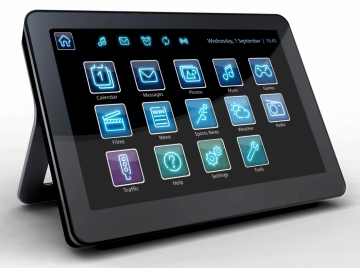Well, yesterday's internet outage (primarily on east coast of US) got me to pay attention to stories about hacked DVRs and security sytems, as these are apparently a big culprit in these attacks. I tried logging into my el cheapo Swann DVR (which I must admit has worked well for about a year or two) and sure enough, it was down and remained so this morning although the DVR iself is working (can see cameras on attached monitor). I discovered a few weeks ago that there is no firmware update available for my system, and while I can change the pw and have done so, the login name is hard coded. And, apparently the same Chinese company makes the firmware for most of these systems regardless of brand. So, I want to ditch this poorly designed DVR and replace it. But if possible, I would like to retain the Swann cameras I already have installed. I suspect there are many others on the forum in a similar situation, so I figured it was time to start a thread to solicit info and ideas.
In my case, I have a Swann 16-channel analog DVR (BNC connectors) with 10 Swann cameras connected to it. I think it's 720p, which is fine for my purposes. I primarily use it just to see if contractors are still on the job when we have them working on something, and for general peace of mind when we're traveling. But I don't really want to replace all 10 cameras, especially with expensive commercial or IP models. And while it might be nice to tie things into my eKeypad or Mobilinc apps, it's not a big deal if I can't - a separate app is fine. I really just need to replace the DVR with something that doesn't have these security flaws, costs no more than a few hundred bucks, AND that will work with my Swann cameras. I don't want to use a PC if possible. There is a Synology NAS always running here, but that seems designed for IP cameras and I think it requires a subscription for the cameras app, which I want to avoid.
So.... any ideas? Thanks in advance for input.
In my case, I have a Swann 16-channel analog DVR (BNC connectors) with 10 Swann cameras connected to it. I think it's 720p, which is fine for my purposes. I primarily use it just to see if contractors are still on the job when we have them working on something, and for general peace of mind when we're traveling. But I don't really want to replace all 10 cameras, especially with expensive commercial or IP models. And while it might be nice to tie things into my eKeypad or Mobilinc apps, it's not a big deal if I can't - a separate app is fine. I really just need to replace the DVR with something that doesn't have these security flaws, costs no more than a few hundred bucks, AND that will work with my Swann cameras. I don't want to use a PC if possible. There is a Synology NAS always running here, but that seems designed for IP cameras and I think it requires a subscription for the cameras app, which I want to avoid.
So.... any ideas? Thanks in advance for input.





